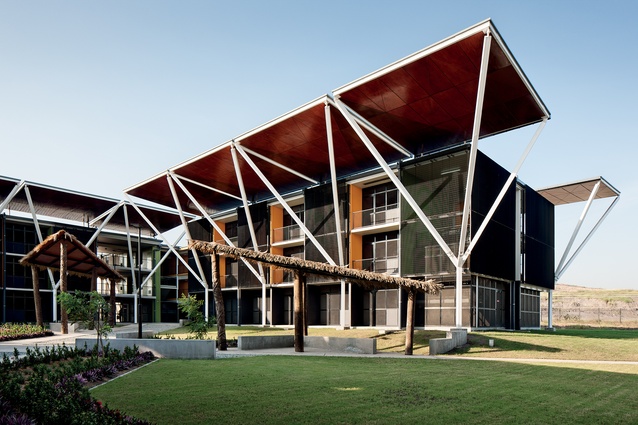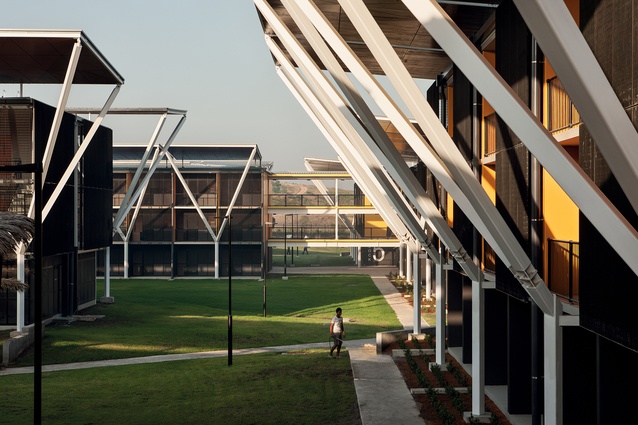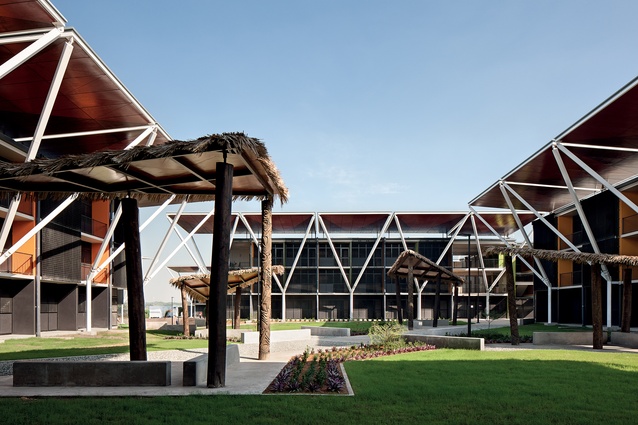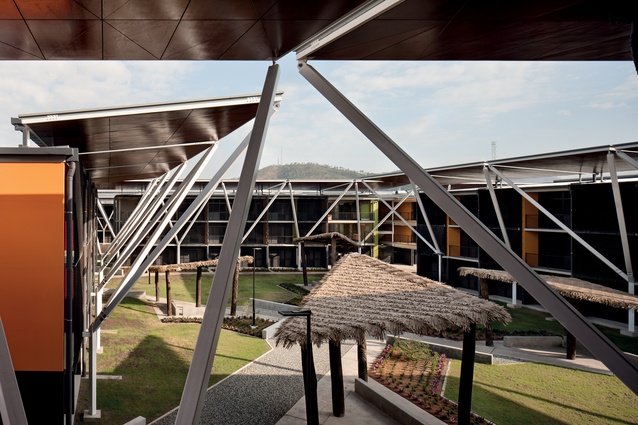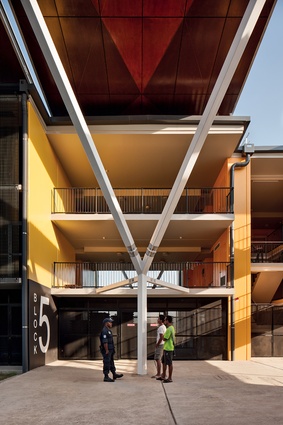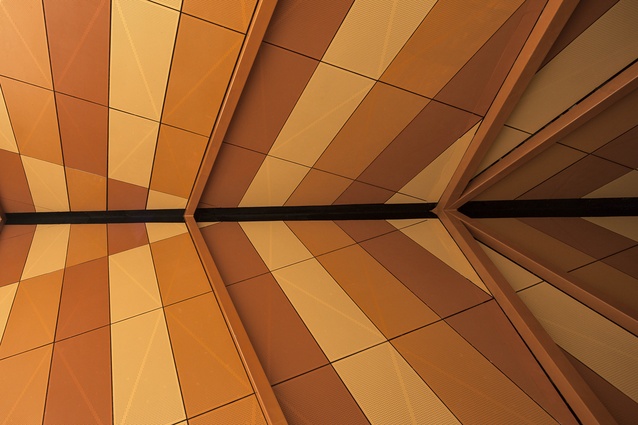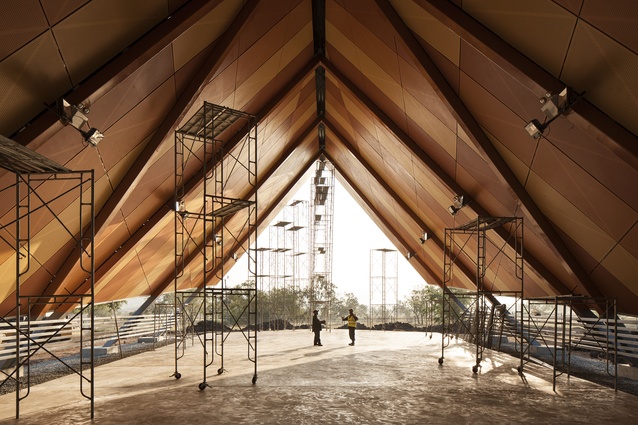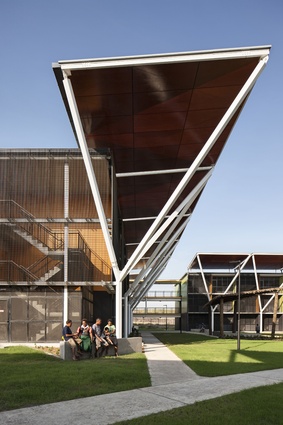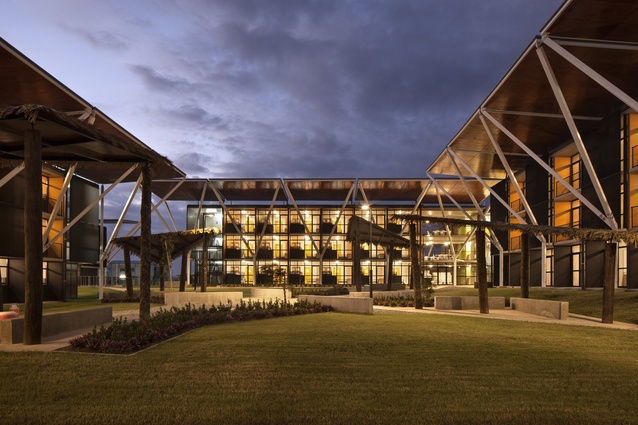Games Village for the 2015 Pacific Games
Warren and Mahoney and Pacific Architects Consortium (PNG) recreated the layout of a traditional village environment in a new games village for the recent 2015 Pacific Games, held in Port Moresby, Papua New Guinea.
Papua New Guinea evokes all sorts of thoughts as a site for architecture: a climate and culture quite distinct from those with which we are familiar here, not to mention the logistics of design and construction management over the great distance and convoluted air journey from New Zealand. It is a country of seven million people, the great majority of whom still live in the customary manner, and a rugged and still largely unknown (to Westerners, anyway) landscape.
The nation achieved independence only in 1975 and has struggled through a number of crises over the succeeding decades, including the Bougainville secession. Travel costs were prohibitive so I haven’t been there and, consequently (and it may be a pleasant change), architect Shannon Joe will be doing most of the talking here.
The capital, Port Moresby, has hosted this year’s Pacific Games and Warren and Mahoney was lead architect in design of the games village accommodation on a University of Papua New Guinea site, which, shortly, will become student hostels. The village includes gathering areas such as a communal dining hall and courtyards, all located along a lengthy strip between the university’s academic buildings and the sporting facilities.
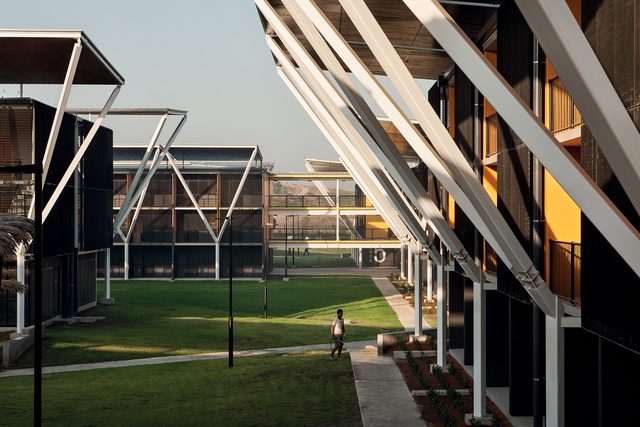
Shannon Joe’s first visit to Port Moresby was not without some trepidation as the firm had been warned that the city was a tough environment in many ways: “a hard place to work” with many “negative attributes”. The place has many issues but the setting is “amazing”, particularly the arrival via rainforest and the sight of the “beautiful glistening harbour”. Joe thinks that, in some ways, Port Moresby, in wrestling with the influx of Western goods and values, is a “tropical island that, possibly, has lost its way” in the tide of colonialist and capitalist forces.
As he looked around for evidence of indigenous culture and inspiration amid a sea of thoroughly ordinary buildings in a beautiful setting (sounds like Auckland to me), this project seemed to offer the opportunity to respond to the challenges of the environment.
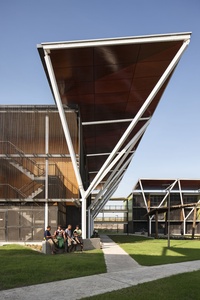
The brief issued by the committee (made up of games, university and government representatives) was focused largely on the functional aspects of housing but Warren and Mahoney was interested, just as much, in coming up with a concept that responded to indigenous culture, climate, materials, social arrangements and so on that could perhaps offer an alternative to Moresby’s mélange of nondescript commercial architecture and shanty towns.
The site, including the capital and university as well as the games village, was seen by the architects as a point of engagement between the heart of the country, its people and the outside world. Its presentation was a discussion that primarily asked the question of the client, “what do you really want?” rather than selling the architects’ immediate ideas.
When asked “what piece of architecture in Port Moresby do you most respect, which says something about you?”, the client committee pointed to the parliament building, a design by Australian architects that was inspired by an East Sepik haus tambaran, one of the most striking building types in Papua New Guinea although by no means representative of the whole country.
Climate was, of course, also a big issue and Joe experienced a day of 40-degree heat, followed by another day of the same temperature but with torrential rain and 98 per cent humidity as well. It seems straightforward to us that the huge parasols that characterise the final design are an obvious reaction to the climate and also allow passive cooling but, surprisingly, these and the courtyards weren’t endorsed at first by the client.
The canopy or covered way isn’t a common building element there and the architects had to argue to set the architectural sights higher than the creation of yet more of the sets of prosaic, air-conditioned boxes in security compounds that you see so often in Port Moresby. The canopies in their uplift and the forward-leaning apexes of the steel supports can be seen to reference the haus tambaran but, more importantly, they also create a sense of unity across the campus.
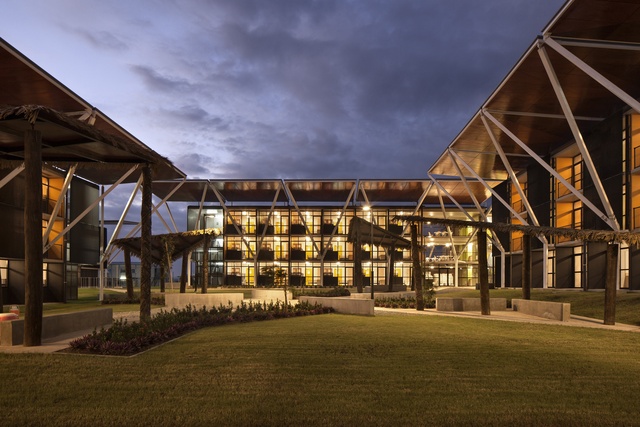
PNG is a tribal nation in which several hundred languages and dialects are spoken. The idea was to give a sense of home and community to future students, down from the hills, who find themselves not just away from their own people but among strangers in a precinct of apartment blocks with 5,000 bedrooms. This is a site that is “six times bigger than the Carlaw Park [university accommodation] which we did in Auckland” and what the architects thought was needed was a sense of community that feels domestic: “a home” that, also, is connected to the university.
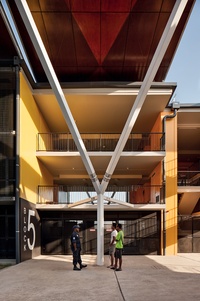
Joe’s key concept was an image of tribesmen, arms interlocked, that left the client committee wondering when it would see any architecture. But the result is a complex that aims to be inclusive of other tribes and other cultures, using building blocks and the space between them to unite the 5,000 bedrooms rather than break them apart. The detail of that design involved some clever security solutions to replace fences, such as raised bridges linking blocks and mesh draping buildings like adornment or cloaks, giving a high degree of transparency and a sense of a unified and relaxed campus environment.
The result is a network of accommodation “all interlocked, all connected with bridges and courtyards, into one big campus”. Within the courtyards, haus winn structures are centrepiece shelters that drew athletes and, now, draw students out to communal spots. Warren and Mahoney knows student accommodation well and has plenty to show for itself in New Zealand.
In Port Moresby, the firm elected to set itself “some really tough brief items” and aspired to something more than the commercial reality delivered in much of the town. It has challenged and led the client in order to deliver architecture that doesn’t just do the job of a building but aims to deliver benefits to wider society.

